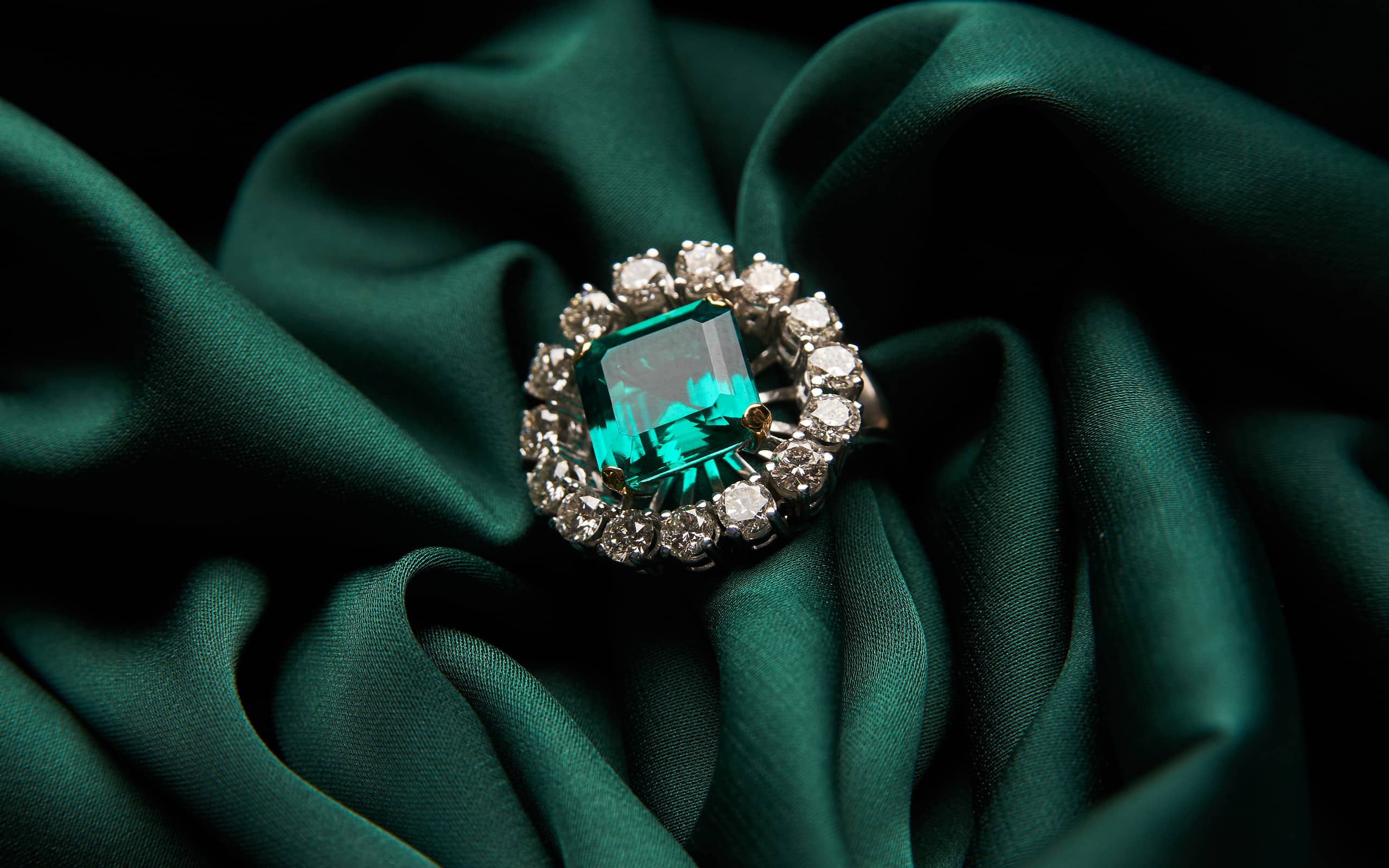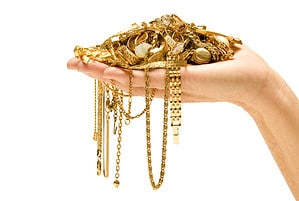Emeralds are an excellent gemstone for jewelry. They are clear and valuable enough to make a statement while adding a bit of personality that a diamond can’t provide. But it’s not just their popularity that makes them valuable. The emerald has symbolism and a rich history that make it a precious gemstone as well.
If you want to learn more about the meaning, uses, and history of this stunning green jewel, continue reading below.
Emerald’s Origin
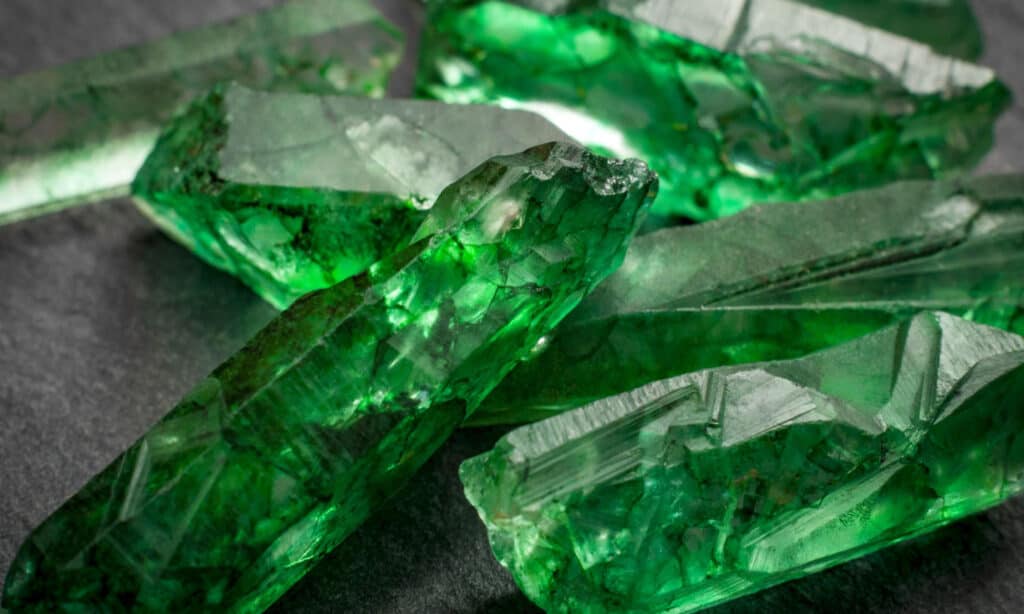
While emerald used to mean any green gem, now, it’s a specific stone that has this name.
©Victor Moussa/Shutterstock.com
There’s no way to say when the first emerald appeared in the world. However, it is possible to get an idea of when emeralds were first used by humans. There is evidence that these brilliant green stones were used as early as 4,000 BCE in Babylon.
The stones were often sold throughout the markets. Unfortunately, there isn’t much information on why they used the stone or why they were in demand. It may have been a fashion statement, or it might be because the people thought the stone had incredible powers.
In the Bible, the stone was mentioned when discussing the apocalypse. There’s also proof that the Incas worshiped emeralds.
However, the first reference to emeralds in the West comes from Aristotle. He adored this gemstone. Aristotle firmly believed that it improved the importance of an individual and helped them to win trials.
Currently, most of the emeralds you see in jewelry come from Colombia. This country is responsible for about 50 percent of the worldwide production of emeralds.
Emerald’s Colors
Interestingly, unlike some other popular stones like sapphires, emeralds are only green. They may be various shades of green, ranging from green with hints of blue to green with hints of yellow. Generally, the pure, rich green that’s associated with the word emerald is the most in demand as it’s the color that people most associate with emeralds. This also means that this is the most expensive form of the stone.
Emeralds are actually just a version of beryl. The green color comes from chromium and vanadium inside the stone. While beryl comes in other colors, only the green versions of the stone are called emeralds.
History of Emeralds
Emeralds are often connected to Cleopatra. Both she and her palace were adorned with the gem. When dignitaries from other countries stopped by, she’d even give them away as gifts. Many scientists think she did this as a form of power and to make sure people remembered her. It must have worked because even to this day, many people associate Cleopatra with emeralds.
It’s worth noting that while stories of emeralds and Cleopatra intertwined throughout history, the stones she had might not have actually been emeralds. Since emerald was first used to describe any green gem, it’s possible that it was a different green stone on display, such as a peridot.
However, emeralds weren’t just for show. In many cultures, people used emeralds to protect against a variety of diseases, poison, infection, and dysentery. Supposedly, the stone even protected people against possession via demons. Arab, Spanish, and Hindu doctors all used these methods for healing.
Even the Holy Grail, from Arthurian legends, may have emeralds on the side of the cup as decoration.
Emeralds in the Bible
Emeralds may show up in the Bible as well. It’s said that in Exodus of the Old Testament, the breastplate of Aaron had an emerald. However, it’s not always easy to tell. This is because, over time, the names of stones change.
Before science could be used to identify the mineral makeup of a stone, people usually clumped stones by color and clarity.
In the Ancient Greek language, the stone in the breastplate was a smaragados. This meant it was a green stone of some sort. However, whether it was a true emerald, feldspar, or any other green stone is difficult, if not impossible, to determine. There was an emerald mine in the area that was around before the breastplate’s construction, so it could have been an emerald.
Emeralds were also in the New Testament in the Book of Revelation. They made up the foundation of the Heavenly City.
Emerald Popularity
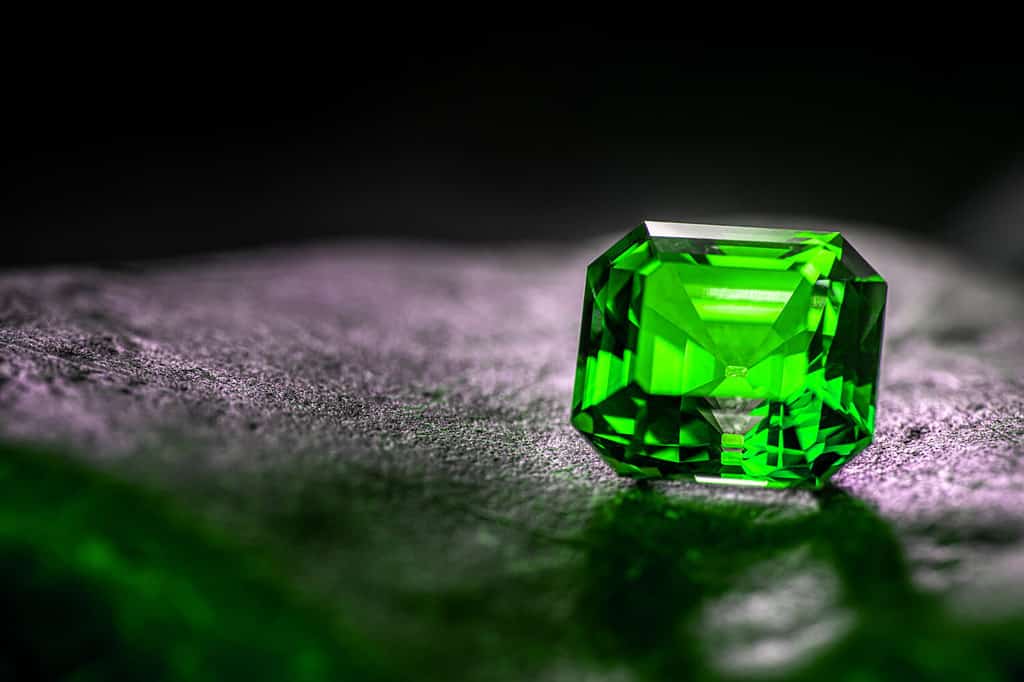
It’s no surprise that a stone this clear and green is highly in demand.
©Levon Avagyan/Shutterstock.com
Emeralds are beautiful and clear. They’re perfect for jewelry. While they aren’t quite as hard as diamonds, they are still sturdy enough for jewelry. This is because they have an 8 on the hardness scale. It’s hard to scratch or damage them compared to some other stones out there.
Though due to false scarcity, diamonds are generally the most expensive stone, a good emerald can cost up to twice as much as a diamond.
Symbolism for Emeralds
Per the Ancient Egyptians, emeralds symbolized fertility and immortality. The Incas believed this too. Myths said that emeralds were a gift from the ancient god of wisdom, Thoth. Because of this, emeralds symbolize wisdom, intuition, and revelations.
This brilliant stone also connects to the goddess Venus, from Ancient Greece and Rome. This goddess symbolizes love and hope. Over time, the emerald adopted this meaning as well.
The bright green of the stone symbolizes love, but not in the passionate way that rubies are. They represent new growth, beginnings, spring, faithfulness in relationships, eternal relationships, and natural connections. Because the stone symbolized faithful relationships, giving one to a woman promoted chasteness and kept them honest in their relationships.
Uses for Emeralds
As a rare and valuable stone, it stands to reason that it has many uses. Wearing an emerald supposedly sharpens your wit, strengthens your memory, and provides you with riches and power.
Emeralds also allegedly help to heal the body. In addition to fighting demons and poisons, emeralds healed the eyes. If emeralds soak in water overnight, the water could then be poured over the eyes to bring them relief and heal one’s vision. Drinking the water was also said to restore overworked organs and help with the kidneys, immune system, and pancreas.
If you’re not into drinking stone water, just keeping an emerald around offers benefits as well. Emeralds bring in a soothing and calm energy. This energy helps provide freshness and vitality in any space. Patience, compassion, improved creativity, and focus are other benefits that follow emeralds.
In the past, people used emeralds to cut through any illusions, curses, and falsehoods. This includes falsehoods in love. With an emerald at your side, it’s easy enough to see if the words your lover spouts are true or not. By helping you remain clear-headed, it also dampens lust and allows for logical thinking.
Since emeralds represent a patient and enduring love, it’s a great stone to use for jewelry such as promise and engagement rings. For those who want to go a little non-traditional for a wedding, it also makes a great wedding ring. It’s an excellent way to tell your significant other that you promise to love and be with them for eternity.
Emerald as a Birthstone
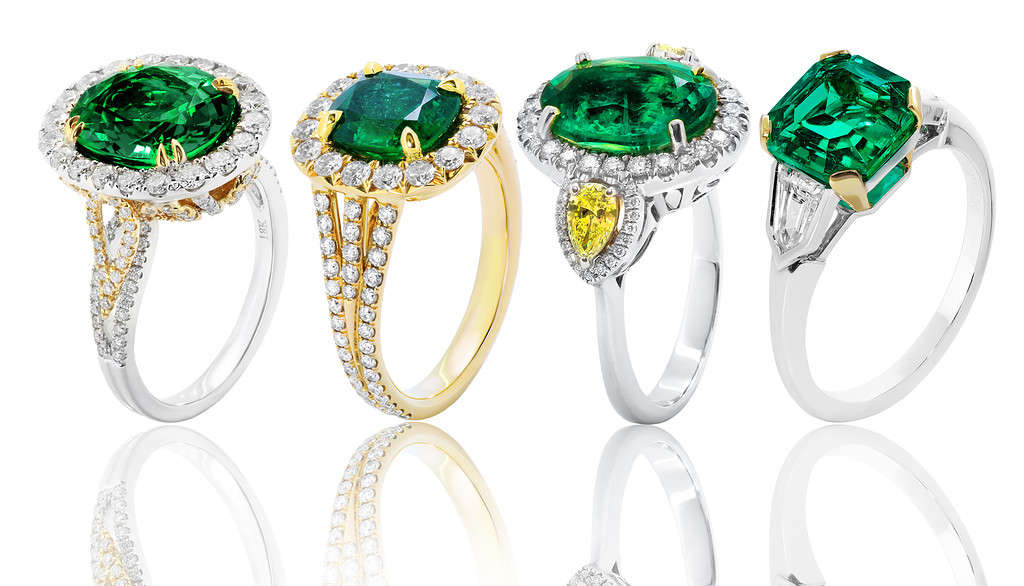
The bright green of an emerald works well with other gemstones and both gold and silver.
©photo-world/iStock via Getty Images
Emerald is the current birthstone for May. It’s a fitting stone for a month known for rebirth, vitality, and growth.
In addition to being a birthstone, Hindu practices commonly associated emeralds with Mercury. On the more western side of the globe, Venus and emeralds were a more common pairing. This is because the goddess Venus emerged from the sea-green ocean. Associating this goddess, the stone, and the planet together makes sense in a rather abstract way.
Thank you for reading! Have some feedback for us? Contact the AZ Animals editorial team.

